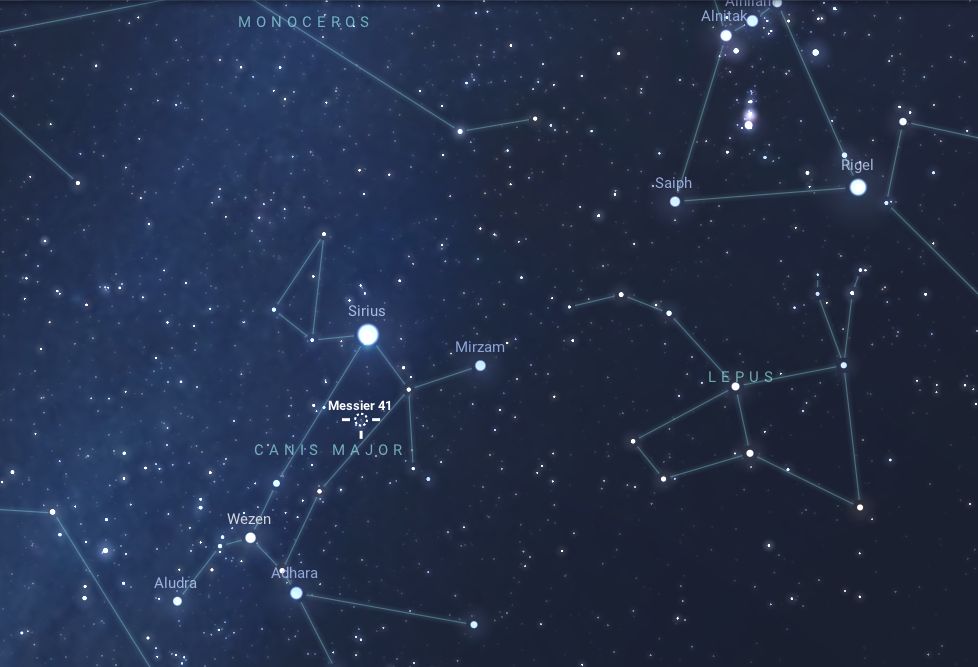Messier 41 (M41), also known as the Little Beehive Cluster, is an open star cluster located in the constellation Canis Major, approximately 2,300 light-years from Earth. It lies within one of the Milky Way’s spiral arms, known as the Orion Arm or Local Arm, which also hosts our solar system. This prominent cluster stands out as one of the more easily observed open clusters, especially in the Southern Hemisphere.
Historical Background
M41 has been known to observers since ancient times. Ancient astronomers could see it as a faint patch of light under dark skies. The Italian astronomer Giovanni Batista Hodierna is credited with the first documented observation of M41 before 1654. Later, in 1765, it was added to Charles Messier’s catalogue of deep-sky objects as Messier 41. This catalogue, originally intended to help comet hunters avoid confusing nebulae and star clusters with comets, has become one of the most famous catalogues for astronomers studying deep-sky objects.
Physical Characteristics
M41 has a somewhat irregular shape with a loose grouping of stars spread across an area about 38 arc minutes in diameter, making it appear slightly larger than the full Moon. The cluster is relatively young, estimated at around 190 million years old. It contains hundreds of stars that originated from the same molecular cloud, sharing a similar age and composition.
Notable stars within M41 include several red giants, which add a reddish hue to the cluster, contrasting with the bluer, younger stars. The brightest star in M41 shines at magnitude 6.3, while most others are dimmer. Due to its relatively low mass and loose structure, M41 is not gravitationally bound and is gradually dispersing over time.
Observation
With an apparent magnitude of 4.5, M41 is visible to the naked eye under dark skies, appearing as a small, faint patch of light. However, for clearer viewing, binoculars or a small telescope reveal the individual stars within the cluster. The cluster lies close to Sirius, the brightest star in the night sky, which serves as an excellent guide for locating it.
M41 is situated at a declination of about -20 degrees, making it especially well-suited for viewing from the Southern Hemisphere. It can be observed from both hemispheres, but observers south of about 40°N latitude experience better views, as it appears higher in the sky. The cluster is best observed from the Southern Hemisphere, particularly during the summer months of December to February when the constellation Canis Major is well-placed in the night sky and less affected by atmospheric distortion.




